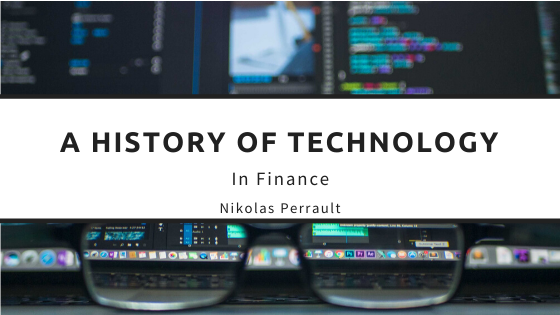The finance industry is becoming more dependent on automation every day. Financial firms use machine learning to assist with everything from process automation to algorithmic trading, enabling them to reduce operational costs, increase revenue, better compliance, and reinforce security. In fact, 35% of America’s stock market funds are run by computers that follow rules set by humans. Those same funds also account for 60% of institutional equity assets and 60% of trading activity.
Let’s take a step back and examine how finance has used technology to improve over the years. An early example can be found in the transatlantic cable, the first completed in 1866. Prior to the telegraph cable being established, cotton prices were relayed via steamships between New York and Liverpool. The introduction of the telegraph cable reduced travel times for information, allowing Americans to get updates on Britain much faster and ultimately helping them determine how much cotton to export, making prices much more consistent.
Fast forward to the 1980s, when Wall Street analysts became early adopters of spreadsheet software. Beginning in 1979 with VisiCalc, early spreadsheet software made budgeting, bookkeeping, making lists and tracking financial projections much easier. A few years later, in 83, Lotus 1-2-3 was introduced for IBM PCs. This new, faster software had all of the major features of VisiCalc. It also allowed analysts to import their VisiCalc files with new features such as variable column widths, a macro language to allow simple programming in cells, and the ability to create charts and graphics. Eventually, Windows became mainstream and Excel was introduced. Excel was easier to use, with most people being able to pick it up on their own as opposed to having to read a book to understand Lotus.
Computers have continued to take over the financial industry in different ways since the days of the original spreadsheets. One of the first big ways computers affected the finance industry was by eliminating the need to execute buy and sell orders in trading. Modern-day trading floors are filled with servers that have taken the place of human traders. In the past 10 years, computers have begun running portfolios, with ETFs and mutual funds tracking indices of shares and bonds automatically. This past September, machines had $4.3 trillion invested in American equities, which for the first time ever exceeded the sums actively run by humans.
Beyond this, computers are becoming smarter every day, many to the point of gaining autonomy. Many programs that use AI now create their own strategies without the need for human input. As these machines become stronger and smarter, they gain the ability to do more. The practically infinite supply of new data combined with advances in processing power has created new ways to assess investments, such as funds using satellites to track retailers’ car parks and scrape inflation data from e-commerce sites.
All of these advances in technology have made finance more accessible than ever, particularly by cutting costs. ETFs typically charge .1% a year, where an active fund would charge 1%. ETFs are even purchasable over the phone. Of course, the automation of finance has raised a few concerns such as financial stability, concentration of wealth, and corporate governance. These are all valid, as many innovations have led to crises before landing on their feet. Regardless, these advances are going to continue, and human investors may be in for a rude awakening if they don’t adapt.

